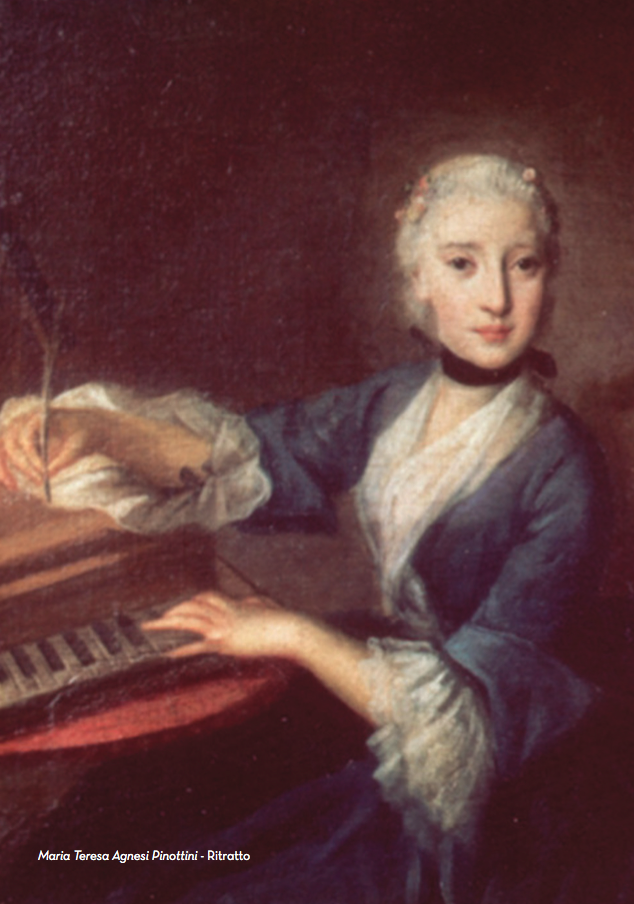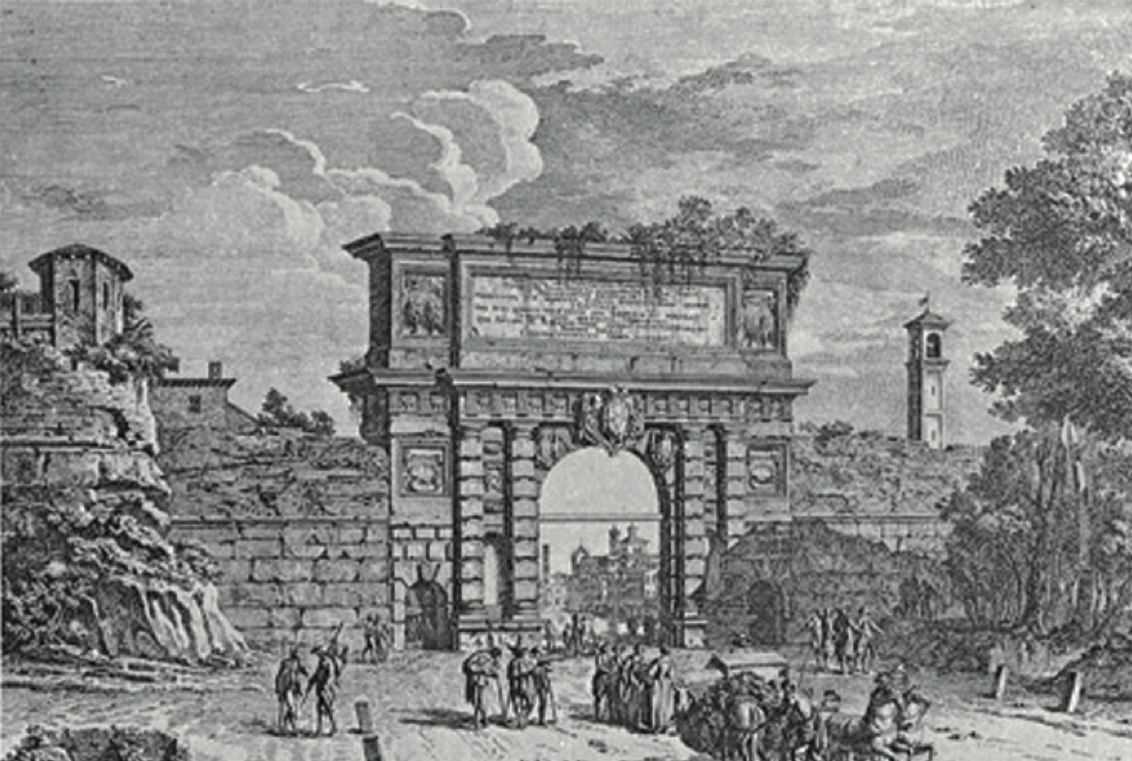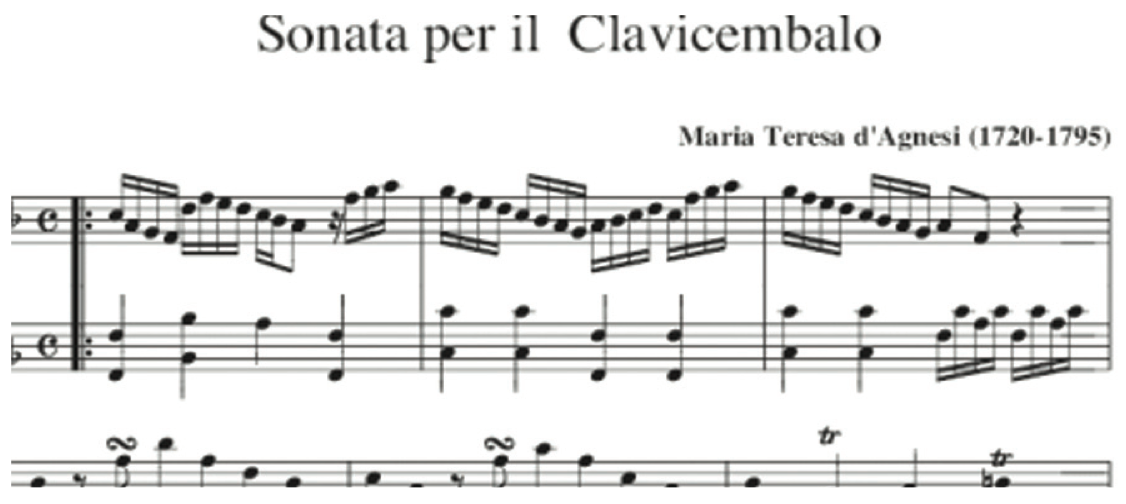Let us imagine the Milan of the late eighteenth century: under the enlightened absolutism of Empress Maria Theresa of Austria, the city is an animated and fertile cultural melting pot. It plays a key leadership role in the vast Italian Enlightenment movement, witnessing the presence of Verri, Beccaria, Parini and the political and cultural debate taking place in parlours, tea rooms and newspapers. In this city, was born, lived and worked one of the most interesting Italian composers of the century, Maria Teresa Agnesi. As many other women musicians of the past, her name remained forgotten for a very long time. So has her music, which was an important part of social events in the courts of the time, as we shall see. Born in October 1720, Maria Teresa received, together with her sister Gaetana (a famous mathematician), an extraordinarily liberal education, thorough and open, without the misgivings that usually characterized the education of young girls in that time. In fact, thanks to her open-minded father, she was able to satisfy her passion for music. She rapidly had the opportunity to demonstrate her talents on the occasion of cultural events organized in the family’s parlour, and which were attended by Italians and foreigners as well. She became a famous harpsichordist and the author of chamber music pieces and, at 27, her skills as a composer were also recognized. In fact, in 1747, her cantata Il ristoro d’Arcadia was dedicated to imperial delegate Gian Luca Pallavicini while her opera Sofonisba was dedicated to Emperor Francis I for the name day of his wife Maria Theresa.

In 1752, personal life and artistic life crossed: her father having passed away, Teresa married Pietro Antonio Pinottini and worked on a melodrama, Nitocris, on a libretto by Apostolo Zeno, and, in 1753, she produced Ciro in Armenia presented in the Royal Ducal Theatre in Milan, for Frederick Augustus of Saxe, King of Poland. On that occasion, Milanese historian and scholar Gianmaria Mazzucchelli wrote about her: "Maria Teresa stands out in particular in the cognition of music, in which she is the wonder of the most renowned professors of this art, she has no equal in Europe. She composes with such idea, taste, intelligence, and expression of words, with such innovative style, and with such purpose, she would surprise anyone."

Even the famous English musicologist Charles Burney, who visited Milan in those years, recalls the protagonist in a cultural evening: "They invited me into a great and beautiful hall where there were thirty persons from all the nations of Europe seated in a circle, and Lady Agnesi was sitting alone. After some conversation, she played on the harpsichord, it seemed it was Rameau himself. She played Rameau and other music she herself had composed, and she sang as well." In the following years, the number of musical compositions by Maria Teresa increased (namely Il Re Pastore, on a libretto by Metastasio also used later by Mozart), and so did the consideration intellectuals had in her regards. Suffice it to mention, for example, the five cantatas for music in verse "to be performed in the Royal Ducal Palace" dedicated to her in 1756 by Pietro Domenico Soresi, like her a member of the Accademia dei Trasformati, a Milanese association of enormous importance, housed in the Carlo Imbonati palace, and to which also belonged Giuseppe Parini. In 1766, Teresa composed Insubria Consolata, a "dramatic composition" intended for the engagement parties of Maria Ricciarda Beatrice d’Este with Ferdinand of Austria, and two years later, in 1768, it is her serenade that brought joy to the wedding of Ferdinand IV of Bourbon with Marie Caroline of Habsburg in Naples (Ulisse in Campania).

Finally, we know from chronicles of those present at the event, that, in 1770, she was part of the small circle that welcomed at Palazzo Firmian fourteen-year old Mozart during his visit in the city. After that date, information relating to Teresa’s work dwindled: as a widow, she had fallen into financial hardship in Milan, where she died in 1795.
Artist by vocation, professional by education and training, and a successful composer, she was forced to remain forever an "amateur" because of the social role assigned to women in that period. The life and art of Maria Teresa Agnesi, however, help us complete the story of that particular time about Milanese music and culture during the second half of the eighteenth century.




.png)